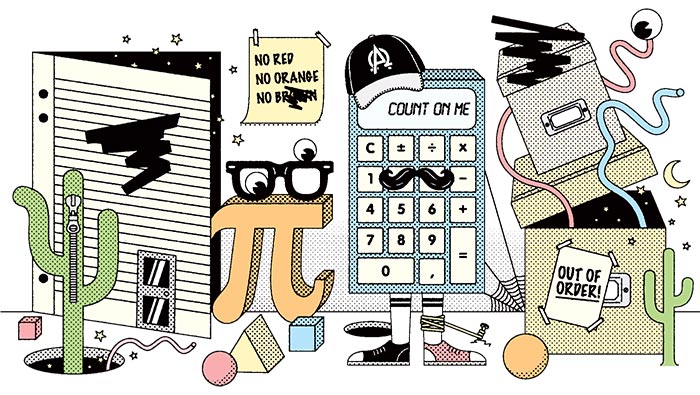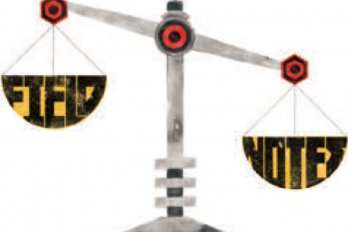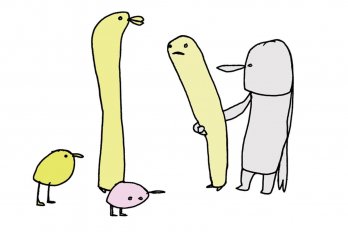On the first day of Autism 2006, the Geneva Centre for Autism International Symposium at the Metro Toronto Convention Centre, the main event was a presentation by Tony Attwood. As the audience trickled into the 1,330-seat John Bassett Theatre, the image on the giant screen at stage centre was a tranquil expanse of ocean. A man in a suit crossed the stage to organize something on the lectern. Three women in front of me began murmuring. It was Attwood. Another woman went up to the stage and called to him. Smiling, he moved forward to greet her and then folded himself down to the stage floor, his head resting in one upturned palm as they chatted. The murmur intensified, coming from all directions. “He’s even lying down for her,” a woman whispered. Another took out her digital camera. “We’ve got to get our picture with him.”
If Asperger’s syndrome has a patron saint, it is Tony Attwood. Born and educated in England, he now heads the Macgregor Specialist Centre in Brisbane, Australia; is an adjunct associate professor at Griffith University in Queensland; and is considered one of the world’s leading experts on AS. To many, Attwood literally wrote the book: The Complete Guide to Asperger’s Syndrome encompasses twenty-five-plus years of clinical experience and research. Having worked with more than 2,000 people (of all ages) with AS, he is a mentor to a generation of occupational therapists and a guru for parents.
Once rarely diagnosed and largely misunderstood, autism—of which AS is a subset, a relatively mild form that generally allows those who have it to function—is now thought to be fairly common. In the 1970s, one in 2,500 individuals might have received the diagnosis; today in the US, it applies to approximately one in 150 children, an increase attributable to better awareness and broader diagnosis. Autism has been reconceptualized from something quite specific into a “spectrum disorder,” a wide arc encompassing classic low-functioning autism—the person locked in his own world—and conditions that are undetectable to the casual observer. Spotting it is akin to birdwatching: you might have to spend many hours before catching a glimpse of a person’s AS tendencies.
In the scheme of autism, a diagnosis of AS is a blessing, but a mixed one, given that we live in such a social world. “Aspy” children, as Attwood calls them, tend to be diagnosed around age seven or eight, just as their socially oriented, neurotypical peers start to notice their difference. My son was diagnosed with AS when he was eight. Nearly three years later, my wife and I are still learning just how powerful and arbitrary the social world is.
I had spoken with Attwood before the symposium. His accent and elocution are not unlike those of c-3po, the hyper-correct android of Star Wars fame. I told him about my son’s concern about AS: specifically, why does it have to be syndrome? To J., Syndrome is the name of the villain in the animated film and video game The Incredibles. “Technically, a syndrome describes a pattern that has a detrimental effect on that person’s quality of life,” said Attwood. “Lots of people feel anxious or sad, but it only becomes a depression clinically when it affects that person’s quality of life.” Suggesting that “syndrome” is an improvement on “disorder,” in his book Attwood quotes an American child’s complaint to his mother: “Actually, I’m not in disorder. I am definitely in order.”
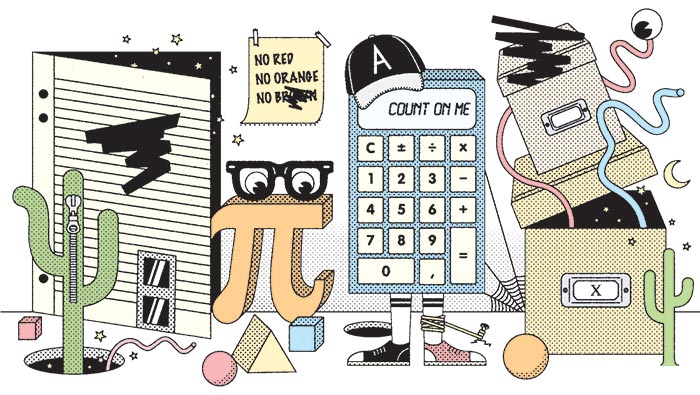
Autistic children, in fact, tend to be driven by order. They might line up objects—cars, blocks, dolls—and can be sent into a blind fury if those orderly rows are disturbed. As an autistic or AS person matures, this compulsion for order and systematizing manifests itself in obsessive interests, which often becomes that person’s salvation or damnation. Darius McCollum, a forty-three-year-old New Yorker, has spent a third of his life in prison because of his overwhelming compulsion for all things rail related: in 2005, he pled guilty to grand larceny for attempting to steal a locomotive. He blamed his Asperger’s. Richard Borcherds could have entered Cambridge’s mathematics department at twelve years old. His childhood obsession was building polyhedrons. At age thirty-eight—the year he won the Fields Medal, the mathematics equivalent of the Nobel Prize—he was diagnosed with AS. He is now a math professor at Berkeley.
My wife and I began “explaining” our son long before he was diagnosed. We had little choice: as a two-year-old at the Montessori daycare in London, England, J. was the only child who ran away from his mother when it was time to go home. “He doesn’t seem to like transitions,” one of the caregivers told us. “He doesn’t seem to like transitions,” my wife and I would mutter to each other as we tried to coax him out from under the sofa after he’d been playing at a neighbour’s apartment. He would scream and twist as we carried him—like two screws with an escaped convict—back upstairs to our flat. Once home, he would calm down as if nothing had happened.
He seemed a normal child in many ways. He loved bath time, was a giggling cherub watching a rubber dolphin slide down the tub wall. But there were premonitions of extremes. He absorbed storybooks and could repeat them in their entirety: “The Owl and the Pussycat went to sea in a be-yoo-tee-full pea-green boat…” He showed tremendous visual acuity, drawing with originality. He was great with numbers, and had a precocious ability to finish complicated puzzles unassisted. He baffled us.
“He’s sensitive,” people would say.
“He doesn’t do goodbyes.”
“A dreamer lost in his thoughts… All intelligent kids are like that…” We heard it all—words a parent wants to hear.
It wasn’t until we moved back to Canada, had a second son and then a third, that we realized our eldest was actually another kind of person. He didn’t seem to see other people as people—not even his own brothers. He was interested in them, but impassively, objectively. When one of them was hurt and was being comforted, J. would walk over with a picture book and ask to have something explained, oblivious to both the suffering and the nurturing before him.
“Don’t you see that your brother is upset? ”
“Why is he crying? ”
“You didn’t hear him fall from the bed? You were sitting right there.”
It was another matter altogether if one of his brothers disturbed his equilibrium: an accidental bump in the hallway resulted in extreme reprisal.
In the summer of 2003, my sister-in-law, a fellow journalist, asked if we had ever heard of Asperger’s syndrome. We had not, and we were suspicious of it—no doubt another maladie du jour. She had mentioned J. to a friend whose son had been diagnosed. There were similarities, such as lack of eye contact, a sophisticated vocabulary, and a monotone voice that typifies “the little professor syndrome,” as AS is also known. But not enough to convince us, or for us to realize that some of J.’s tics were in fact “stimming”—repetitive, self-stimulating behaviour.
It took another year before we sought professional advice. Our family doctor put us in touch with the Centre for Addiction and Mental Health (camh) in Toronto. My wife took J. to meet Dr. Leon Sloman, head of psychiatry, and returned home with a positive diagnosis—and news that Sloman wanted to meet me.
Sloman’s office is much like that of other distinguished academics: books stacked haphazardly or strewn about the floor, an embarrassingly old computer. He was preparing a PowerPoint presentation about AS, and on the screen was a list of responses to a diagnosis. I suggested he add “parental anger.” He looked up, his face showing the signs of a career diagnosing people like J. and taking questions from people like me.
But AS only entered the diagnostic nomenclature in 1994, Sloman told me in a later meeting. “I began to get referrals and to make the diagnosis maybe five, six, or seven years ago,” he said. “It always takes a few years to percolate. It’s exploded over the past few years.” Difficult as it is to consider one’s child part of an explosion, my initial feeling was relief. In hindsight, I see that relief as a reflexive impulse engendered by our faith in medical science: great, now we can fix him.
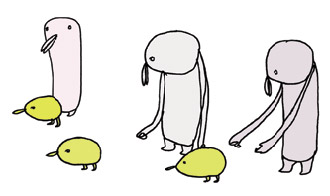
While a relatively new addition to the autism lexicon, AS was first identified more than sixty years ago, in the research of two Austrian psychologists working with autistic children in different parts of the world. It happened almost simultaneously: first, when Vienna clinician Hans Asperger coined the term “autistic psychopathy,” and then through the work of Leo Kanner, who had fled Nazi Germany for the academic sanctuary of Johns Hopkins in Baltimore. Asperger wrote his pioneering paper in 1944, but “Die ‘autistischen Psychopathen’ im Kindesalter” (“Autistic psychopathy in children”) didn’t gain broad currency until 1991, when it was translated into English by Uta Frith, a psychologist at the University of London’s cognitive development unit. “One can spot such children instantly,” Asperger wrote. “They are recognizable from small details, for instance, the way they enter the consulting room at their first visit, their behaviour in the first few moments and the first words they utter.”
Reading Asperger’s case studies provides parents of an Aspy child with a distant mirror. “Normal children acquire the necessary social habits without being consciously aware of them, they learn instinctively. [Autistic children] have to learn everything via the intellect,” Asperger surmised in a resonant description that has been picked up by contemporary clinicians. In his acclaimed book The Explosive Child, Ross W. Greene analyzes an everyday encounter in the schoolyard. A boy approaches another boy, smiles, slaps him on the back, and says, “How’s it goin’ ? ” An autistic or AS brain might interpret the situation as follows: What does the smile mean? How hard was the slap? Has this same boy done this before? How hard was the slap compared to earlier slaps? Does he slap other boys? And that’s the first step; the Aspy child’s own mental and physical response has yet to be formulated.
In the mid-1980s, Frith, working with Simon Baron-Cohen, then her Ph.D. student, and another scientist, Alan Leslie, developed an analysis called “theory of mind.” It refers to the ability to put yourself in someone else’s shoes, a skill, writes Frith, that “enables us to predict other people’s behaviour. Thinking about what others think, rather than what is going on in the physical world outside, is essential for engaging in complex social activity, because it underpins our ability to co-operate and to learn from each other.” In autistic individuals, theory of mind is either disabled or entirely absent, which makes them very frustrating companions. Neurotypical people, programmed for social interaction, tend to dismiss those with autism or AS as anti-social. But to say people with AS have difficulty socializing makes it sound as if they don’t care for cocktail parties. Similarly, when AS children attempt to interact with their peers, failure and rejection can amplify low self-esteem. They give up trying, because it only makes them feel worse. Aspy children are not always happily adrift in their own little bubbles; like most everyone else, they yearn for kinship. Unfortunately, it tends to be on their terms.
The social world is intuitive, and its conventions so ingrained in collective behaviour that we barely notice them. Humans are profoundly social, and when an individual fails to fit in, others—no matter how modern, savvy, kind hearted or well intentioned, empathic or sainted—tend to react negatively. We are hard wired to identify and isolate aberrant behaviour, any signs that run contrary to the group. Knowing this, parenting Aspy children can be a minefield. At what point in a developing relationship—with a new neighbour, the parent of a potential friend, a soccer coach—do we explain J.? The first meltdown? The second unbridled criticism of a teammate’s failings? Should we have to explain at all?
For a parent of an autism spectrum child, anger is never far from the surface. On day three of the symposium, I sat in on a lunchtime session cheerily titled Dads ’R’ Us: A Session by Fathers for Fathers. Two of the three men were fathers of children with classic autism. One of them paced with barely contained agony, seething as he described his diminished hopes for his child and his own thwarted career ambitions. I recognized that rage, the crushing letdown that comes with the realization that there is no easy fix, no long-term cure. The recognition came with a shaming relief: our situation is nowhere near as extreme. But here, too, lies a problem. There’s a tendency to say, “It’s not that bad,” to brush aside the experiences of those who have gone before us, and let our son muddle through. And then I just get mad at myself. My son needs my help. He needs advocates—at school, in the park, even at home.
More so than in cases of classic autism, the figurative expression “stumbling block” provides insight into the AS individual’s world view. Aspy children tend to interpret every utterance literally. “What block? I don’t see one. And I’m not stumbling. I’m walking normally.” Neurotypical children intuitively skip over superficial social exchanges and don’t ask, as Aspy children do, “Why would you ask me, ‘How are you doing? ’ when you can plainly see that I am fine? ” Not until you’ve taken an existential step sideways from the social world do you appreciate the utility of such interaction as a lubricant to making your way. As Aspy children decode their environment—interpreting everything literally—to the unaware observer, they may appear closed off or unwilling to acknowledge others.
For J., the social world can be an upsetting, even dangerous place. An example: the morning walk to school is the usual collection of neighbouring parents and children. My son walks ahead of them. Another group of parents with small children is ahead of him. My son walks through the small children as you or I might walk through a cornfield. Not over them, but brushing past them. It’s a bombardment of signals to the parents of these children—this boy is different; he is not to be trusted near small children; he is to be avoided.
Onstage, Attwood is ideally suited to his audience, mostly professionals who deal with people on the autism spectrum, parents, and a few AS individuals. The information is dense but structured, the delivery spiced with pathos and humour, with mime and performance acts such as Spot the Aspy. For this routine, Attwood apes the carriage, ambulation, and focus of an adult AS male—back rigid but tilted slightly forward, arms and legs straight, laserlike eyes gazing at a point on the ground two metres in front of him. The laughter is rich with recognition. But it is Attwood’s gift for metaphor that makes his presentation so lucid and welcoming.
“Imagine a clearing in a forest,” he says. “That clearing represents brain development. In [it], a number of tree saplings are growing. In the typical child, one tree grows quickly and dominates the clearing, shades the other plants, takes all the nutrients from the soil, and inhibits the development of competing plants. Now, for the typical child that [tree] is the social part of the brain. But if that plant is not as dominant and doesn’t inhibit the others, then other plants will thrive. Your brain inhibits other experiences, especially the sensory experiences. This means that these guys may have an ability that we have inhibited, in hearing, smell, touch, taste.” In other words, people on the autism spectrum may be socially awkward, but they are uniquely aware and sensitive to perceptions neurotypical individuals simply miss.
Attwood calls the positive attributes associated with autism the Three Ms: mechanical, mathematical, and musical ability—Dustin Hoffman’s character in Rain Man, or Geoffrey Rush’s pianist in Shine. But because AS is at the milder end of the spectrum, an AS person with one of these “islets of ability” is more likely to find a traditional place in society. Indeed, there is strong evidence that AS adults are over-represented in the ranks of engineering and information technology. Incidences of autism diagnosis are greater in regions associated with the high-tech industry, such as California’s Silicon Valley and Redmond, Washington, home of Microsoft.
One explanation for these regional spikes is assortative mating: geeks mating with geeks. In a groundbreaking 2001 article, “The Geek Syndrome,” published in the technology magazine Wired, Steve Silberman wrote, “As more women enter the IT workplace, guys who might never have had a prayer of finding a kindred spirit suddenly discover that she’s hacking Perl scripts in the next cubicle.”
Research points strongly to a genetic link. Simon Baron-Cohen, Uta Frith’s protege, now a professor of developmental psychopathology at the University of Cambridge and director of its Autism Research Centre, is a leader in the field. In The Essential Difference: The Truth about the Male and Female Brain, Baron-Cohen points to autism in twins. If an identical twin has autism, the chances of the other twin having an autism spectrum disorder are between 60 and 90 percent, whereas the coincidence in fraternal twins is about 20 percent. Since identicals share 100 percent of their genes, while fraternals share about 50 percent, “this strongly suggests that autism is heritable,” argues Baron-Cohen. People diagnosed with AS tend to have a parent or grandparent with similar traits—one of the reasons Sloman wanted to see me: Aspy kids often have (undiagnosed) Aspy dads.
Baron-Cohen postulates what he calls the “extreme male brain.” Using an extensive range of self-directed surveys, he charted a graph of humans on two axes: empathizing and systematizing. Neurotypical females figure slightly higher on the empathy axis, with men farther along the systematizing axis. But autistic males and females both show significantly higher rates of systematizing, and are lower on the empathy scale, indicating that autism spectrum individuals of both sexes tend to have brains dominated by male systematizing impulses.
I suggested to Baron-Cohen that AS is a condition we should try to harness, not cure. He concurred and, in an article published in the millennium edition of the journal Development and Psychopathlogy, wrote: “I wanted to shift people away from the idea that autism spectrum is a simple medical disease, which was the prevailing view and in some quarters still is. Disorder is an inappropriate term. AS involves a different form of neurological wiring in the way the person thinks differently and perceives differently. But that doesn’t necessarily mean that they are worse than other people.”
In her introductory essay, “Asperger and His Syndrome,” published seventeen years ago in the collection Autism and Asperger Syndrome, Frith wrote, “Asperger pleaded for the recognition of such children, pointing out the potential that they had to offer society… he also suggested parallels between autism, scientific originality and inversion.” The Roman poet Seneca, Frith reminds us, observed that there is no genius without madness, a notion (with us at least since Aristotle linked melancholia and creativity) that is now being seriously considered vis-Ã -vis autism generally, and AS specifically. Says Baron-Cohen, “Of course, in certain situations—like when you’re required to socialize—it is a disability. But in other contexts, AS may confer certain strengths, and you wouldn’t want to treat those, or reduce or eradicate those qualities.”
In keeping with the view that autism is linked to genius, Michael Fitzgerald, a psychiatry professor at Trinity College Dublin, has analyzed biographies of artists and philosophers to conduct a kind of posthumous diagnosis of high-functioning notables with, potentially at least, autism or AS. The lineup is a cultural dream team: Mozart, Swift, Van Gogh, Bartók, Orwell, Warhol, Gould, etc.
Could J. be a genius trapped inside an eleven-year-old with the frustration threshold of a toddler? Maybe, but for every potential Glenn Gould wandering Toronto, there are many Aspys living on disability because they can’t hold down a job. My wife and I have met them: adults who come in to camh to talk about life and what our children can expect. Stocking shelves at a drugstore, working in the mailroom—these are considered success stories. Where will my son be in ten years?
My lineage is all about “eccentric normality,” the term used by Lorna Wing, another contributor to Autism and Asperger Syndrome, to describe the condition. My wife and I play the game of looking at relatives for clues. We accentuate the positive, but still, a good number of my kin might be described as functioning oddballs and on the introverted side of the social divide. Maybe J. is a part of this, and as such maybe he’s okay. After all, he’s in regular classes at school in French immersion; doesn’t run away (too much); doesn’t disrupt the class (too much); he “presents” reasonably well—a seemingly shallow concern, until you’ve experienced an AS child who doesn’t present well.
Every Wednesday at camh, J. attends a social skills group organized by the Aspergers Society of Ontario and guided by a team of occupational therapists and speech pathologists. The parents have their own group discussion led by autism spectrum specialists. At the end of each session, one of the occupational therapists comes into the parents’ meeting and discusses what the kids are working on. “Today we talked about good fidgeting. For example, jangling change in your pants pockets is good fidgeting. Picking up a chair and rocking it back and forth on your head is bad fidgeting.”
Which is why we as parents are at pains to explain that AS is a communication disorder, not a behavioural one. There is nothing wrong, per se, with rocking a chair on your head. It is what other people make of such actions, and negative (though neurotypical) interpretations of these behaviours often lead to problems. Let’s add Sartre to the Aspy pantheon: “Hell is other people.”
One of the speakers at the symposium, Ros Blackburn—a more classically autistic person, with an astonishing capacity for public presentation but not individual interaction—described a trip to a play with a group of mentally disabled people. While others enjoyed the play, she sat through it without processing any of it as theatre. She had been transfixed by the physical minutiae, like a feather from a costume alighting on the stage floor.
Blackburn told us of her great desire to go to McDonald’s. This brought surprised laughter from the audience. Surely a jest. But Blackburn doesn’t jest—she’s incapable of it. She only speaks the truth, a truth disarming in its poignant bluntness. Later, I approached her; there was mutual trepidation. She could not look at me. And I felt awkward trying not to search for her gaze. I asked her to explain why she cannot walk into a McDonald’s.
“It’s the whole working out of what’s going on,” she said, staring past my elbow, “of making sense of the environment. Knowing, for example, that you have to move forward as the line progresses. I know I have to wait in a queue, but I have to wait here.” She started to move her feet. “Then, in a few seconds’ time, you have to wait not here but there. And that becomes the ‘here.’ And knowing that somebody [behind the counter] looking up and saying ‘Next’ means I have to move up. Because she hasn’t said, ‘Ros, which burger would you like? ’ They’re just looking up. And that means I’ve got to place my order. They might say, ‘Would you like a bag? ’ and I have to work out does she mean do I like their bags? Or do I want to use a bag? And on it goes.”
On it goes. A friend and her three daughters came to stay at the cottage for a week. I was serving dessert, and J., then ten, stood expectantly. I gave a bowl to one girl, then J. reached to take one. “Guests first,” I said, passing him over to give another girl a bowl. “Why? Why? ” The anger flooded his face. “I was next in line.” He had his serving within twenty seconds, but ten minutes later was still fuming over the injustice of the concept that guests should be served first. It was a boneheaded move on my part. A simple comment to prepare him and adjust his expectations would have spared him the fury and shame of losing control in front of guests. What was I thinking?
J. still baffles us; maybe he always will. Three years after the diagnosis, my wife and I are now working with a psychologist, learning to think like J. thinks, learning to think like an Aspy. The idea is to predict and thus avoid incidents rather than deal with the aftermath. Objectively, it’s highly instructive—you interpret the world differently. Subjectively, it’s exhausting. But that exhaustion gives us an inkling of the challenge J. and his Aspy peers face every moment they spend with other people. The long-term goal is to raise his frustration threshold, to learn to resolve his inner turmoil.
In the 1960s, according to Frith, “the general view was that autism is an emotional disorder with a psychological basis, and the burden of blame was put on the mother. This was terribly wrong.” The fact of autism forced scientists to reconsider accepted wisdom about brain development, “not as a big bowl of spaghetti tangles, but more like a building with different floors and rooms.” Attwood likens the diagnostic process to a hundred-piece jigsaw puzzle. “Each piece is a fragment or characteristic of AS. Eighty or more pieces, and you’re there… There are certain essential corner or edge pieces you need.” But, he adds, “everyone has ten to fifteen pieces. So the question is not ‘Have you got any? ’ but rather ‘How many have you got? ’”

